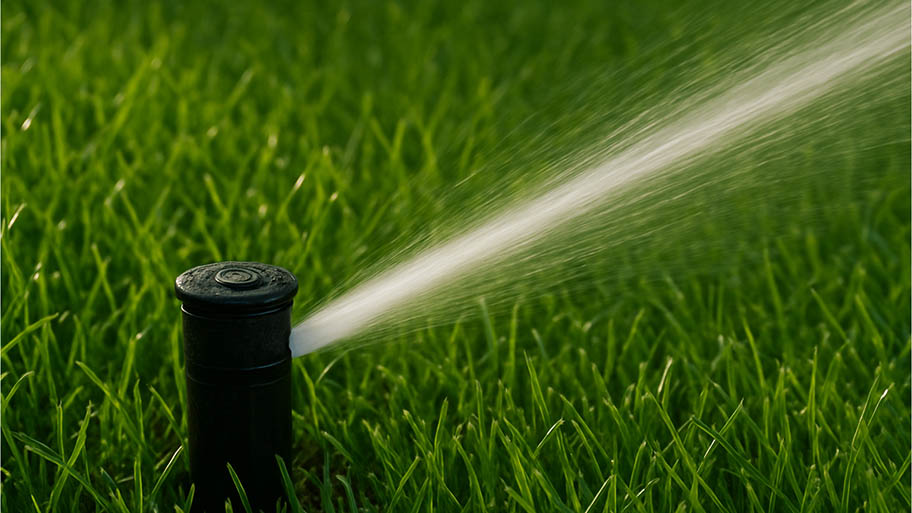
Discover drip irrigation system cost estimates, key price factors, and ways to save. Get transparent pricing to plan your home irrigation project confidently.
Keep your lawn green while living green


Low flow irrigation systems are a great way to conserve water while keeping your plants hydrated.
They can run you anywhere between $400 and $5,000 for professional installation.
There are three main types: drip, trickle, and spray.
This is not the type of project you want to DIY due to the potential for unforeseen costs and permitting.
Vibrant green lawns and thriving plants are often the crown jewel (and coveted prize) of most suburban neighborhoods. But with changing rainy seasons and hotter summers, keeping those plants and grasses well watered has become a challenge. Enter low flow irrigation.
These systems are a great way to make sure your yard is getting the hydration it needs without wasting any water. Here’s what you need to know about getting with the flow.

Low flow irrigations are a type of sprinkler system (sometimes called microirrigation for its smaller and more targeted approach) that offer a way to keep your plants and lawn watered while eliminating waste. These types of systems have become very popular in areas where frequent droughts have caused water use restrictions, but they are a great solution for watering needs in most areas.
| People Who Should Use It | People Who May Not Benefit |
|---|---|
| You hate watering with a hose | Your area has strict water regulations |
| You have physical limitations | You have low water pressure |
| You’re environmentally conscious | You don’t have a big yard budget |
There are several different varieties of systems, each of them varying in both complexity and expense. Hiring a landscaper to install a low flow irrigation sprinkler system costs between $400 and $800.
Irrigation systems are more expensive to install in western states than in eastern states. However, irrigation systems in the East are more costly to maintain than ones in the West. This is because cold weather in the East creates a freeze/thaw cycle that can expand pipes and cause them to blow.
Low flow drip systems are one of the most common types that homeowners have installed and are great for everything from keeping your garden beds well watered to ensuring your veggies are getting all the water they need. These systems run by installing a tube full of small holes either underground near your plants’ root systems or above ground at the base of your plants, ensuring all of the water gets directly to where your plants need it most.
The low flow trickle system is best used when you’re dealing with potted plants, like in a container garden or greenhouse. This system features a series of smaller nozzles that are attached to stakes and then connected to a main tubing line. Often called spider sprayers (thanks to the system's overall web-like appearance if you look at it from above) you can count on this type of arrangement to hit multiple plants that are further spread out.
If you’ve ever seen a yard with several sprinkler heads spread out across the entire space, you’ve likely witnessed a low flow spray system in action. These water-efficient sprinklers are attached to an underground system of pipes and are specially designed to make sure no water is wasted as it’s distributed.
Rigging up your own low flow irrigation system may seem like a simple task, but there are plenty of things you need to consider before DIY. Your area may have permit requirements and water restriction guidelines. Additionally, since these systems require installing at least a portion of the piping underground, you may not realize that something has gone wrong until you’re looking at a massive (and expensive) mess.
While DIY-ing could save you a few bucks up front, it’s likely that it will cost you more down the road. Hire a local sprinkler installer to get the best value for your money and get your plants looking more luscious than ever.
From average costs to expert advice, get all the answers you need to get your job done.

Discover drip irrigation system cost estimates, key price factors, and ways to save. Get transparent pricing to plan your home irrigation project confidently.

Discover yard drainage cost estimates, including average prices, key cost factors, and tips to help you budget for your yard drainage project.

A French drain costs around $9,250 to install, but several factors will determine the final price you pay. Learn the cost to install French drains in this guide.

Sprinkler heads can go missing in your lawn or landscaping, leaving you with uneven watering. Learn how to find sprinkler heads covered by grass and plants.

How do smart sprinklers work? Like all smart technology, smart irrigation systems use the power of the internet and real-time data to adjust your watering schedule. Learn more.

Keep your lawn and garden lush and healthy without wasting water with our expert irrigation tips, from when to water, to water conservation ideas.